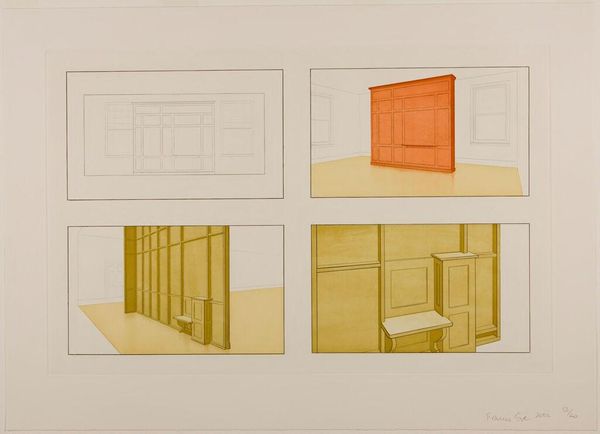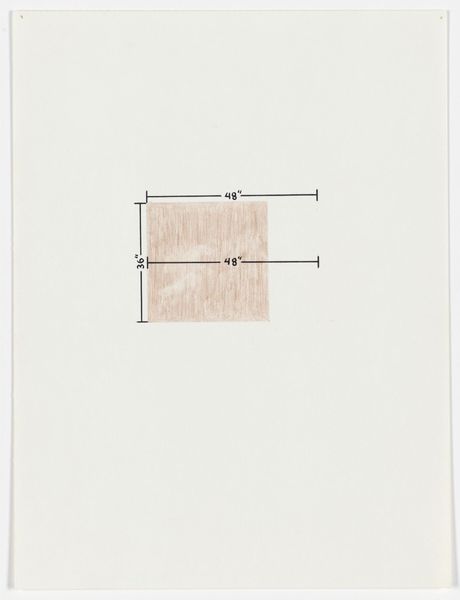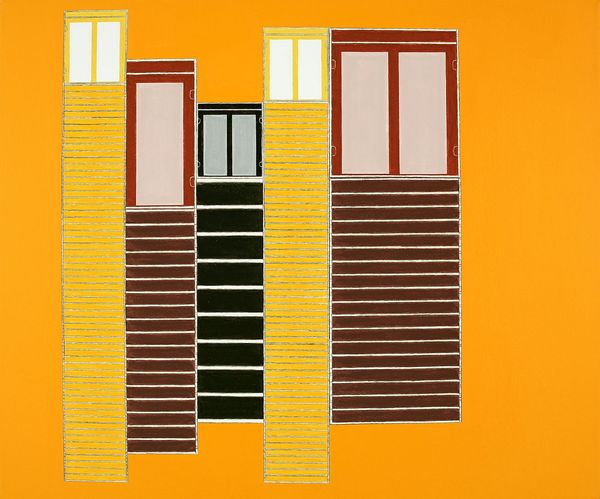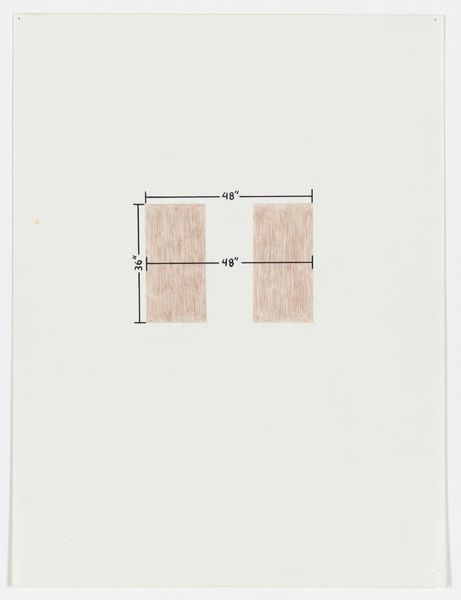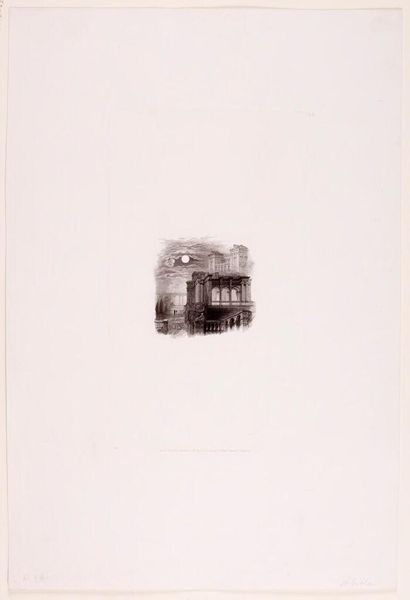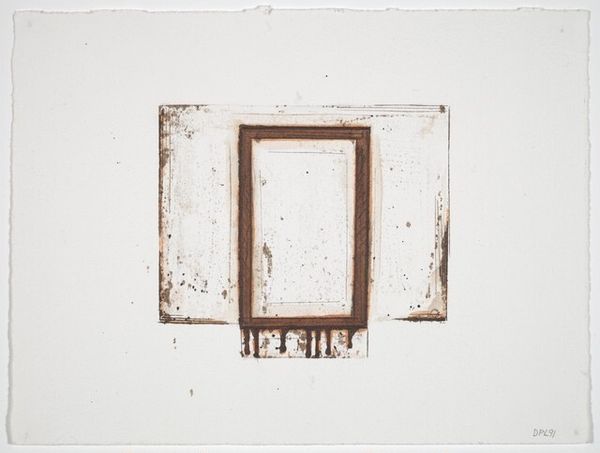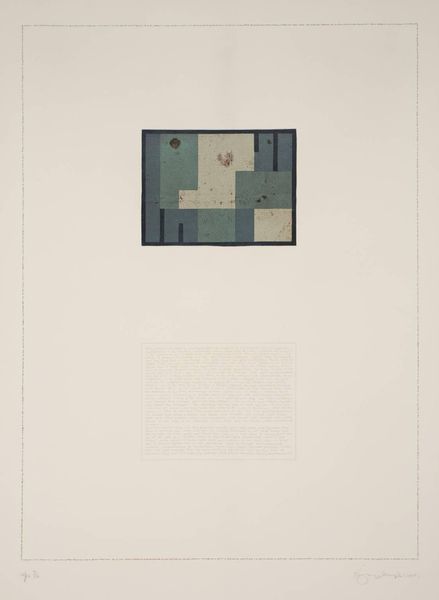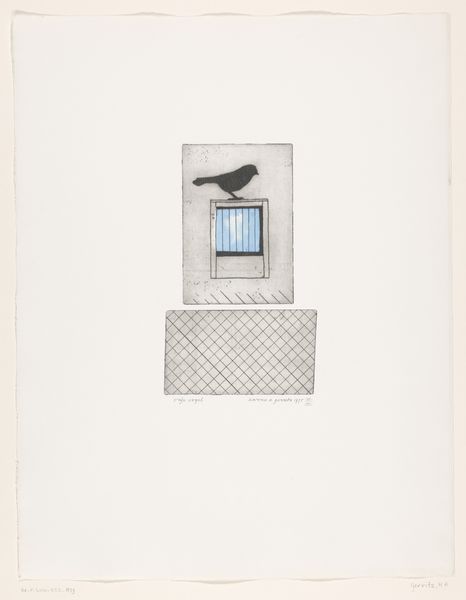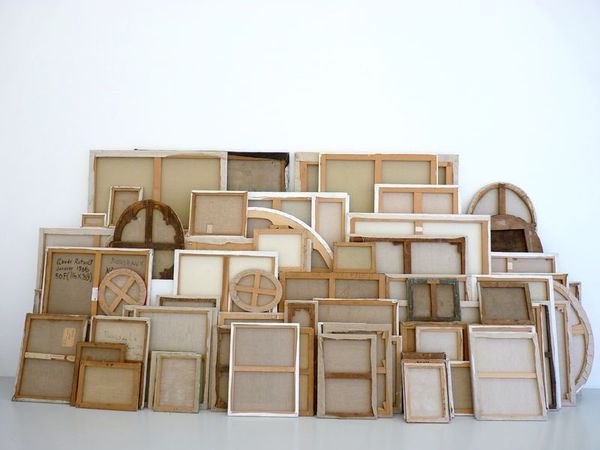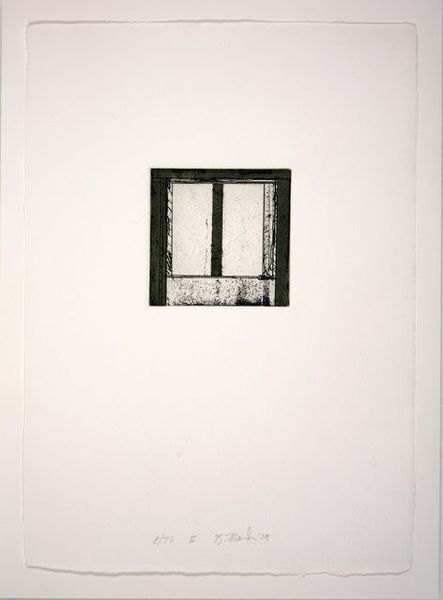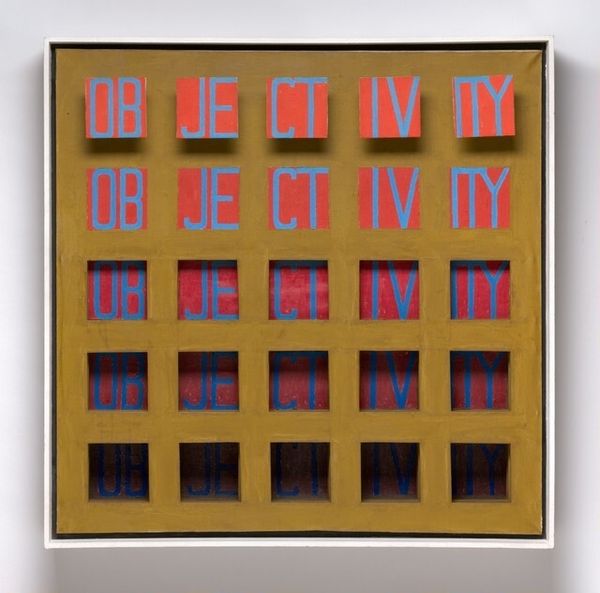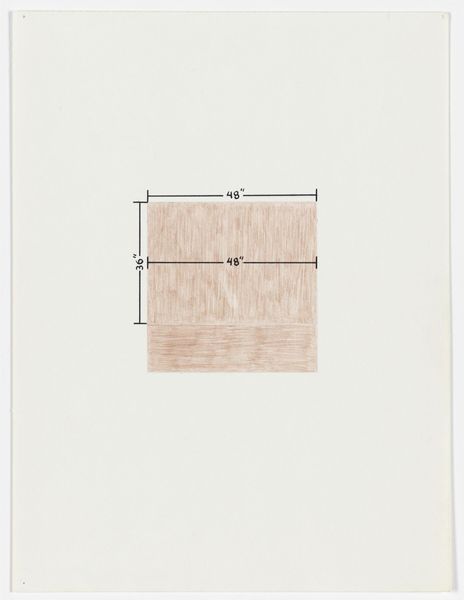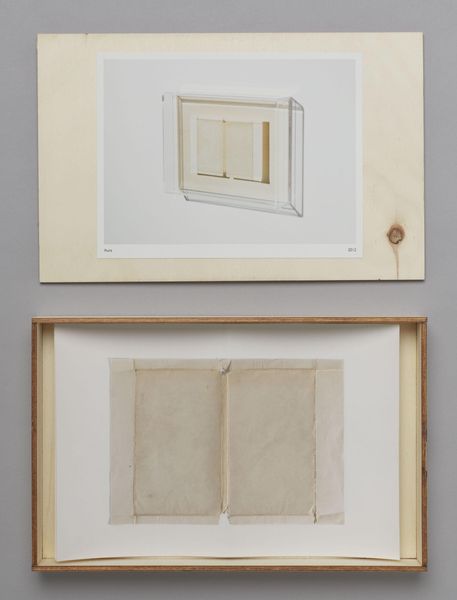
drawing, mixed-media, print, pencil
#
drawing
#
mixed-media
# print
#
geometric
#
pencil
#
cityscape
#
realism
Dimensions: sheet: 43.7 x 32.5 cm (17 3/16 x 12 13/16 in.)
Copyright: National Gallery of Art: CC0 1.0
Curator: This is "New Jersey Buildings #2 (3)" by Michael Clark, completed in 1979. It's a mixed-media piece incorporating drawing, print, and pencil work. Editor: My initial thought is how… contained it feels. Almost clinically detached. The meticulous geometry isolates this fragment of urban architecture, rendering it almost…abstract? Curator: Precisely. Clark’s precise rendering flattens the architectural space. The color palette, while restrained, is meticulously applied; notice the variation in the window hues— the strategic use of green, white, and blue. Semiotically, it presents a complex reading. Editor: But let's consider the materiality: the paper itself, the choice of mixed media, the printmaking process, which implies multiples. This isn't about capturing the singular essence of a building; it’s about seriality, repetition, the mechanics of urban construction itself. How does that feed into our understanding? Curator: The serialization creates a distance; the emotion resides in that aesthetic. Each precisely rendered line is less about documentation and more about creating a system, a grammar of form that invites contemplation on structure itself, devoid of any historical or social narratives. The material supports that flatness. Editor: I disagree that its divorced from narrative. Think about 1979, what it means to document these buildings from New Jersey - an industrial center but in perceived decline. These materials become not neutral choices, but a comment. Clark used quotidian materials to record what others perceived as unimportant, making these anonymous buildings worthy of being preserved on paper, if not physically in our cities. The formal detachment you speak of, I read as reverence and perhaps loss. Curator: An intriguing interpretation. Though, ultimately, the buildings function as subjects, and only tangentially; more critical is Clark’s commentary on structure, system, and a certain calculated coolness. It’s more of the semiotic process involved when reading built environments as a visual system. Editor: Well, perhaps that cool analytical gaze also helped someone like me see both the system, and the stories the building holds within the urban matrix of which it's part of. Curator: Indeed, I can concede that it highlights the dual aspects and function, one the built system, the other the social material. Editor: Both elements preserved now by Clark’s rendering from the past.
Comments
No comments
Be the first to comment and join the conversation on the ultimate creative platform.
